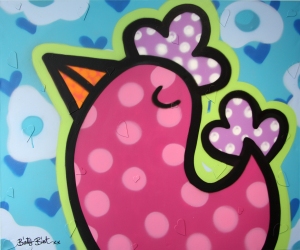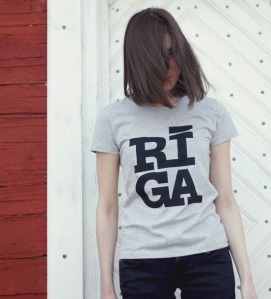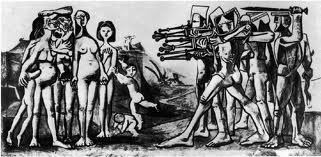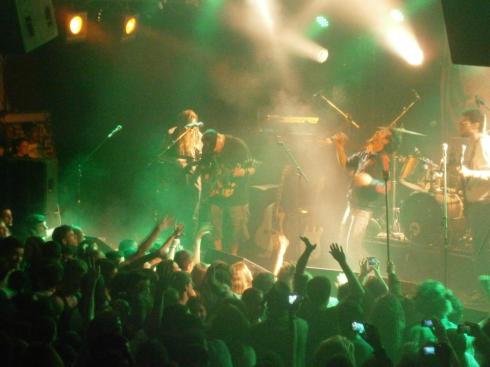When the sun comes out in London people stumble around confusedly for a bit, before realising what this MEANS. Then they rush to open green spaces, half-stripping off at lunchtimes to get a bit of colour while they devour their Pret purchases. Summer in the city also means sipping wine at art openings sprinkled throughout the centre – Farringdon, Brick Lane and Notting Hill being choice locations for crowds spilling out on to pavements, mingling with the after-work drinks mobs at the neighbouring pubs. It must be the start of the Summer then, or at least Spring, if last week I found myself at the opening of The New School street art exhibition in West London.
Here’s my review of what went down (aside from about 5 glasses of wine, oops). Oh, and you can also read this article on the rather fabulous West London Living website, where you’ll also find a fiiiiine selection of tips and treats that lurk in the Westery side of LDN!:
From Cherie Strong’s delicate ballerina sketched on wooden skate boards, to Binty Bint’s upbeat chicken in wellies sprayed live on the gallery’s wall, the pieces in Graffik Gallery’s new show The New School, proclaim their locations loud and clear. And no piece is clearer about where it is, or indeed, where it’s been, than Johnman’s The Glorious Morning We Missed The Last Train Home(pictured above). The hauntingly sweet image of a couple strolling down a railway track is emblazoned on to a group of train tickets, unaware when they were tattooed with their nondescript destinations that they would end up in west London, in a colourful arty heaven, admired by Londoner’s drinking £1.50 wine.
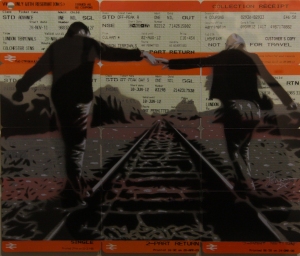
Best title for a picture I’ve ever heard: ‘The Glorious Morning We Missed The Last Train Home’, by Johnman
London is at the heart of this exhibition – each jarringly colourful piece representing its own little vision directly from the streets – all squashed into one of the city’s premiere spots for catching the next best thing. Some of these artists have been all over the world, stylishly scrawling their mark on all four corners – but gathered here together in their home town, they form a show that is London through and through. Where else could you see Prince Harry wielding a gun next to a policeman scolding Super Mario, or a sunny bird jostling for space with a wild-haired Medusa woman? But not all roads lead to London – this exhibition demonstrates that it’s not where you come from that matters, but where you’re going. And these artists are going far.
The New School at Graffik Gallery: 284 Portobello Road, London, W10
Until Thu 2 May; daily 11am–6.30pm; Free
www.graffikgallery.com; 020 8354 3592
